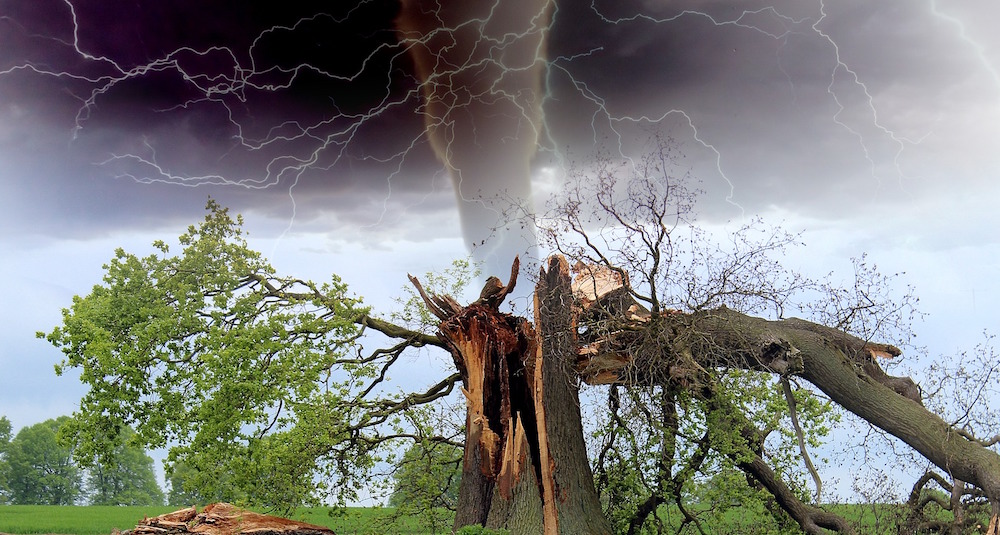
Spring in the St. Louis area inevitably kicks off the tornado season, which reaches its active peak around May, according to National Oceanic and Atmospheric Administration (NOAA) Storm Events data. It comes as no surprise that the risk of storm damage to property increases during this time period. Missouri state experiences an average of 32 tornadoes per year, with 2006 being a recent record-breaking year seeing 102 tornadoes throughout the state.
How to Prepare Trees for Storms
Step 1: Preventive Tree Pruning and Maintenance
The best way to prepare trees for storms, including tornadoes, to regularly maintain them. Happy, healthy trees are stronger and can withstand strong winds and damage better than trees that are brittle, prone to disease, or have structural problems. Taking steps now to care for your tree, such as scheduling tree trimming and having your tree examined for common tree problems, will reduce the risk your tree won’t recover following a severe storm.
Step 2: Care for Roots
Although most people think of the branches and limbs when they think about tree care, ensuring the roots have no issues is an important step in storm preparation.
Weak roots due can lead to an increased risk of a tree splitting or falling in a severe storm. A tree can develop a weak root system if construction on the property damages them or the tree lacks a wide mulch ring which prevents damage to the roots when mowing the lawn. Making root care part of your tree maintenance helps the tree stay strong and hold up better in the event a severe storm, such as a tornado, comes in your area.
Step 3: Protect Trees from Lightning
Older, mature trees tend to be taller than most other trees, but their height brings with it the likelihood they will be struck by lightning during a storm. To minimize the chance lightning will destroy your tree, install a lightning protection system and protect your investment.
A lightning protection system is an electricity conduction system with a copper conductor connected to a ground rod. In the event lightning does strike the tree, the lightning protection system moves the electricity from the strike down the tree and into the ground, reducing the chance of side-flash to nearby structures. Our certified arborists can install one of these systems in your tree to defend against lightning strikes.
Additional Tree Storm Prep Tips
Here are some additional tips to follow to protect your trees from damaging winds, rain, and storms like tornadoes:
- Make sure your tree’s limbs are not near and do not touch power lines. If a severe storm blows the tree into the power lines, the situation becomes increasingly dangerous for everyone in the area.
- Check that your soil is not loose or gravelly, as this can increase the chance a tree blows over. Soil around trees should hold water well, not be too compacted, and has good drainage for watering your plants.
- Keep an eye how your tree reacts to mild winds. If you notice that the branches at the top of your tree are blowing heavily, the limbs may be creating a windsail effect. Having a certified arborist provide selective tree trimming will reduce the likelihood the limbs will react poorly to stronger winds.
For help with tree storm preparation, or if you have experienced damage to your trees after a storm and need assistance with tree removal, contact Omni Tree Service today!






